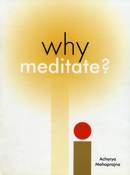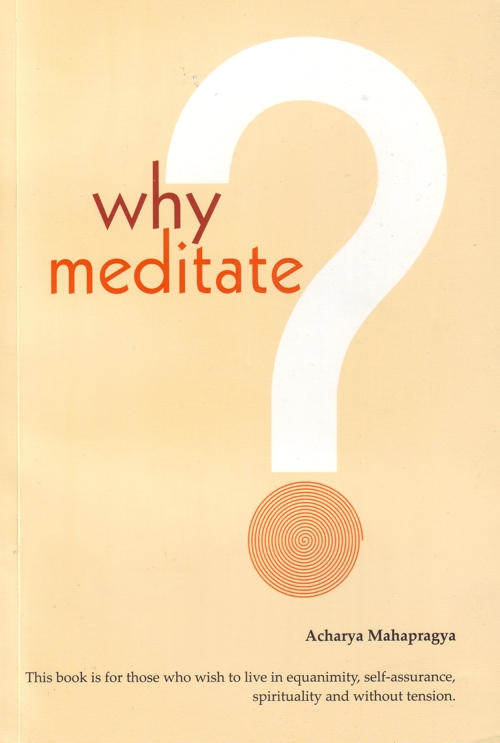

Man has two kinds of powers - the power of knowledge and power of action. Some people have emphasized only knowledge and denied the importance of action, while others have stressed the importance of action and have neglected knowledge. Both are absolutist perspectives and cannot be complete in themselves. It is only when knowledge and action blend with each other that completeness can result. Neither mere knowledge nor mere action can suffice for completeness.
Today, tension is a very grave problem. When man performs an activity, there is something else that happens along with the activity. With every activity, there is tension. There is no activity that is bereft of tension. In fact, the truth is that no venture can be undertaken without tension. Tension will always be there.
The question is: why is tension a problem? When tension is high, it becomes a problem. In general terms, tension is an expectation of accomplishing or conducting any activity. Tension can be both physical (muscular) as well as mental. The subtlest and most complex tensions are those that are linked with our emotions. When physical tension becomes excessive, it creates a problem. Mental tension is also commonly experienced, but if it crosses its limits, then it, too, becomes a problem. There is a beautiful saying in Sanskrit: 'Ati Sarvatra Varjayet'- 'every place should be bereft of excess' i.e., anything in excess is harmful.
Even the consumption of excessive quantities of nectar will cause it to turn into poison. Contrarily, limited use of poison could make it act like nectar. Therefore, excessiveness should not be present anywhere. A person should possess clear discrimination so as to avoid over exertion physically, mentally and emotionally. If we work within our own limits, the problem of tension will dissolve of its own. If a man works continuously for six hours at a stretch, tension is but a natural consequence. If he knows Preksha Meditation and the art of living, he would switch to a different type of work. Switching from one work to another is a very beautiful practice that releases stress. When we sit down to write or edit our Aagam (Jain canonical books) literature we do not work for hours at a stretch. We work for one to one-and-a-half hours and then stop, after which we start doing some other work. There is no tension in this. If we keep on doing one work continuously, tension arises. If you want to be free from tension, the best solution is to keep switching from one kind of work to another.
The second solution to be free from tension is to take rest after 2 hours. There are many ways to relax. After an hour's work, one could relax for 5 minutes by doing Kayotsarga. This would purge the tension and leave us free of it. While working for two hours, one could practice Mahaprana Dvani (the humming sound) two to three times, and that would also take out stress. One could also practice Sarvendriya Sanyam Mudra (special posture for controlling all senses and mind) in between one's work, after working for two hours at a stretch. This, too, will make the tension vanish.
From a scientific point of view, tension emerges from the senses. The more you see, the more you hear - the more tension is created. Tension is created when your communication with the outer world increases. If we cut down our link with the outer world and completely break off our communication with it, automatically our tension ends. You can practice Sarvendriya Sanyam Mudra at any time. The procedure for practicing it is - insert your thumbs in the ears, placing right index finger on your right eye and left index finger on your left eye. Keeping two middle fingers on your nose and the rest four fingers on your lips. This is how you stop the activities of senses and mind. If you practice it for three to five minutes, you will feel relaxed, fresh and rejuvenated as if you just took rest, and haven't done any work at all. In this posture, all the senses are controlled. Removing your fingers and opening your eyes will make you feel as if you were in a different world. Even five minutes' practice of this posture will expunge the tension created by working for two to three hours.
One of the best ways to get rid of tension is to practice Mahaprana Dvani. Whenever you are in tension, practice Mahaprana Dvani for two to three minutes, and this will free you of stress. In a relaxed posture (that of Kayotsarga), keeping the back and neck in a straight line, loosening all the muscles, closing eyes, and taking a long, deep breath, exhale producing a bee's humming sound, through the nostrils and throat.
These simple techniques are important in relieving commonly occurring tensions.
Tension has physical, imaginary as well as emotional causes. For a poor person who doesn't get his meal (because he has no money to buy or cook food), the resultant tension cannot be dissolved by any such technique. His problem will be solved only by his efforts like starting a business, getting a job, etc. Meditation is very useful to help us face problems, when they arise, without getting tense. While facing the problem, if we get entangled in it, the problem will get worse. Then it will be difficult to unravel the knot and solve the problem. Whenever the problem comes, try to solve it, but do not allow your mind to get entangled, so that you do not emerge a loser. While facing the problem if a person is deeply enmeshed in it, then he has already lost. One who does not get stuck with the problem but tries to solve it in the right way does not fail - why, he even wins!
Developing our perspective will help us greatly in resolving problems. Our perspective should be right. Even in paucity one should have the right perspective. Neither should we underestimate ourselves nor should we get disheartened - rather, we should put forth the right effort to find a way out. The perspective should be: "I want to solve the problem either by myself or by taking advice from others and somehow come through it." Here, meditation can help solve 50% of the problem. Then you will be able to take decisions and work with an independent mind. If, however, you entangle yourself in the problem, your brain will get heavy and the problem will increase in complexity. The problems caused by emotions and passions are very complicated. In a family of 10, if the elder one says to the younger one, "You are just sitting around and eating all day. What could bother you?" These words would create a huge problem. When the mother-in-law says something to her daughter-in-law, tension begins. Emotional tensions are graver because they hurt a person directly. The reason is obvious: people living in a society hardly pay any attention to their tone, words and language. I have told many political leaders: "Exercise control over your words and don't directly attack a person of the opposite party. Criticism of principles or policies is all right. But personal accusations, personal abuse (using bad words) and personal criticism are not cultured." This sends out the wrong message to society. The common man thinks if big people can act thus, why can't we, too, do the same? If those who hold the reins of power in their hands, and are entrusted with the wealth and control of the nation, also behave obscenely by abusing each other, using uncultured and offensive language - and worse, if they do this openly, they are setting an example to ordinary people, who will feel: “If such great people can use this kind of language, why can't an ordinary man like me also use it?” A very wrong message goes out. It is, therefore, imperative that powerful people, and people in high positions, are polite and cultured when they interact with each other. They should not use bad or rude language. This matter holds good for every family as well. How should people in a large family (of say, ten - twenty members) communicate with each other? What kind of language should they use? This is one of the important topics to be discussed. If you use discrimination in your language, speech and words, it is possible that the problem of tension does not occur at all. If you don't discriminate your language, however, problems may arise in every spoken word.
 Acharya Mahaprajna
Acharya Mahaprajna
 Copyright by Acharya Mahaprajna ©2005
Copyright by Acharya Mahaprajna ©2005